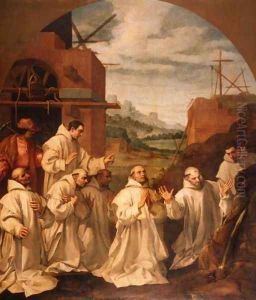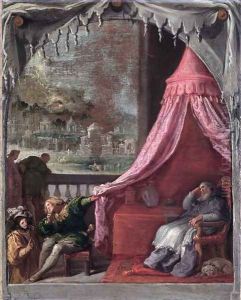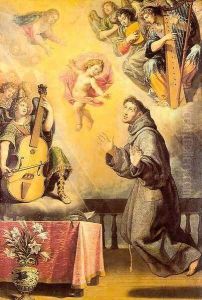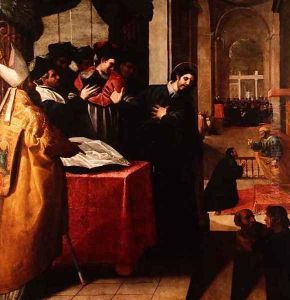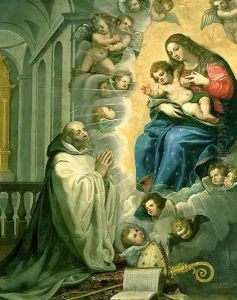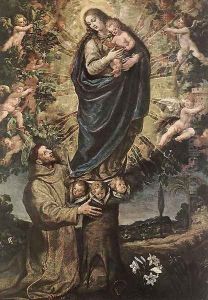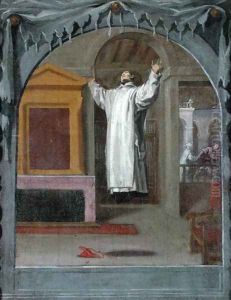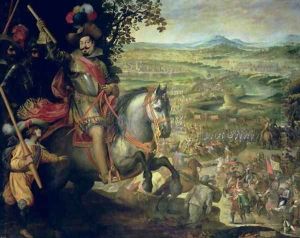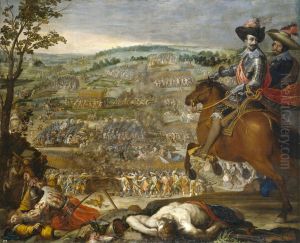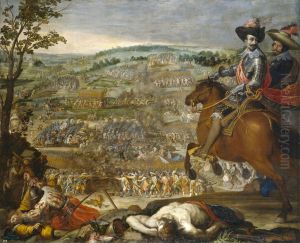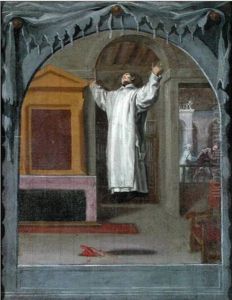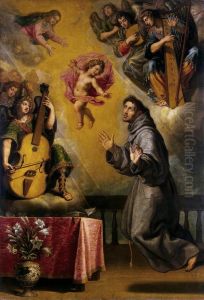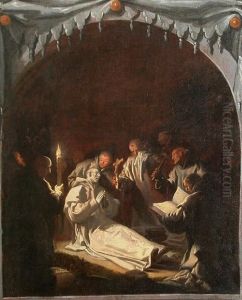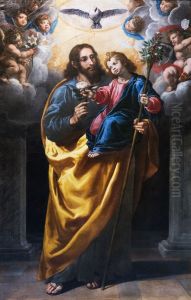Vincenzo Carducci Paintings
Vincenzo Carducci, also known as Vincencio Carducho, was an Italian painter of the Baroque period. He was born in 1578 in Florence, Italy, though his exact birth date is not recorded. Carducci was one of the prominent artists of his time, known for his religious compositions, frescoes, and narrative scenes.
Carducci's artistic journey began in his early years as he was born into a family with strong artistic ties. His brother, Bartolomeo Carducci, was also a painter. The Carducci family moved to Spain when Vincenzo was still young, and it was in Spain that he would spend the majority of his life and where he would create his most notable works.
In Spain, Vincenzo came under the tutelage of the famed Spanish artist Bartolomeo Carducci, his brother, who was working for the Spanish court. Through this connection, Carducci developed his skills and eventually succeeded his brother in royal service. After Bartolomeo's death in 1608, Vincenzo took over his workshop and became a court painter to King Philip III of Spain.
During his career, Carducci painted numerous religious works, altarpieces, and frescoes. He was heavily influenced by the Italian Renaissance and Mannerism, which is evident in his use of dramatic lighting, robust figures, and a vivid color palette. However, his style also evolved to include some characteristics of the early Baroque, with a greater emphasis on emotion and movement.
One of Carducci’s significant contributions to Spanish art was his defense of the Italian tradition against the growing popularity of Flemish and other Northern European styles. In his written dialogue 'Diálogos de la Pintura' (1633), he argued for the artistic principles derived from classical and Renaissance art. This work is not only a reflection of his thoughts on art but also an important document providing insights into the theory and practice of painting in the 17th century.
Carducci's legacy includes training and influencing a generation of Spanish painters. His works can be seen in various churches and museums, notably in Madrid. Vincenzo Carducci died in 1638 in Madrid, leaving behind a body of work that reflects both his Italian roots and his adaptation to the Spanish artistic environment.
